New for this year, the Trace 36 is X-Fusions’s top end, big wheeled enduro fork, aimed at the influx of long travel, hard hitting big wheeled bikes that have become prevalent in the past 12 months, and has been designed to take on the big hitters from Fox, RockShox et al.

The Spec and Tech.
The Trace is 29er specific and delivers up to a massive 170mm of travel, although travel can be easily reduced in 10mm increments down to 140mm using X-Fusions Push-Pin system on the air shaft. The fork in this test has been reduced to 160mm by the good folks at Upgrade, the UK distributor for X-Fusion.
As well being 29er specific, the Trace is only available in boost spacing with a tapered steerer. Another point to note is that while a lot of brands are now playing around with shorter offsets, X-Fusion has decided to keep things simple (for the moment at least) and only offer the Trace 36 with a ‘standard’ 51mm offset.
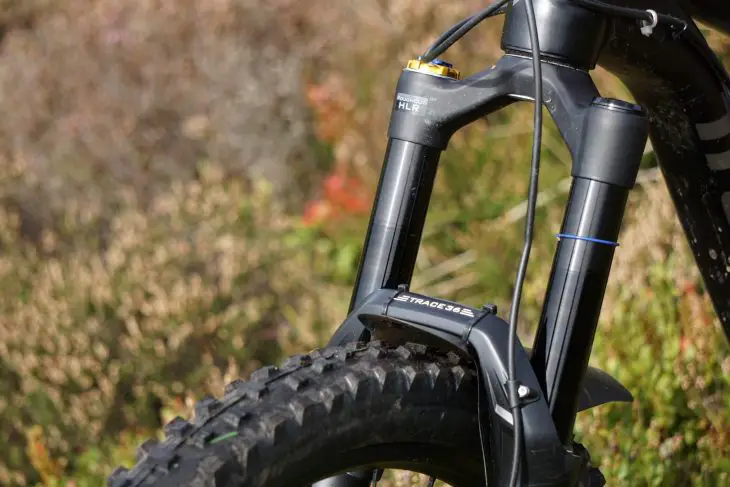
Although the Trace name already existed in the X-Fusion line up with the Trace 34, the Trace 36 has been redesigned from the ground up, rather than just trying to alter what they already had. This has resulted in new lowers, crown and a self adjusting negative air spring that not only helps to lower the weight, but means that the negative air automatically matches the positive.
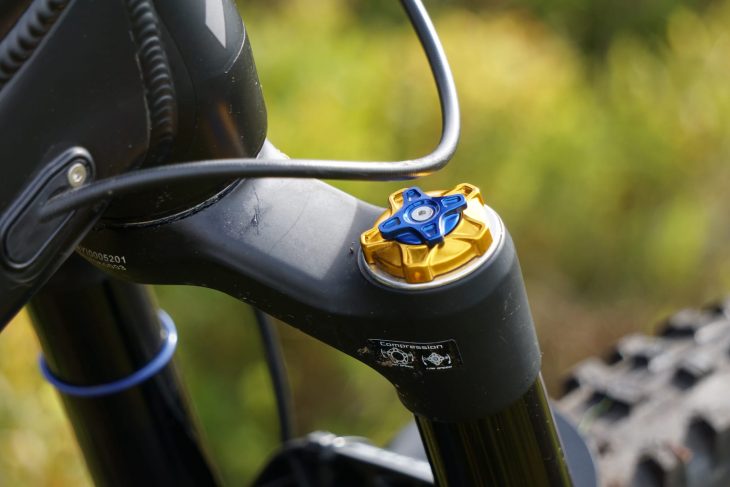
As suggested in the name, the Trace 36 is designed around stout 36mm aluminuium stanchions for added stiffness when the going gets rough. Inside those chunky tubes and solid looking magnesium lowers is X-Fusion’s Roughcut HLR Damper. The Roughcut damper has an expanding bladder which accounts for oil displacement, and helps against cavitation, and the whole damper can be removed without neding a fork rebuild. Again, as the name suggests, the Roughcut HLR provides both external high and low speed compression damping adjustment via the dials on the top of the damper stanchion, and also includes the a new CNC aluminium damper with new mid-valve, which X-Fusion states increases control.
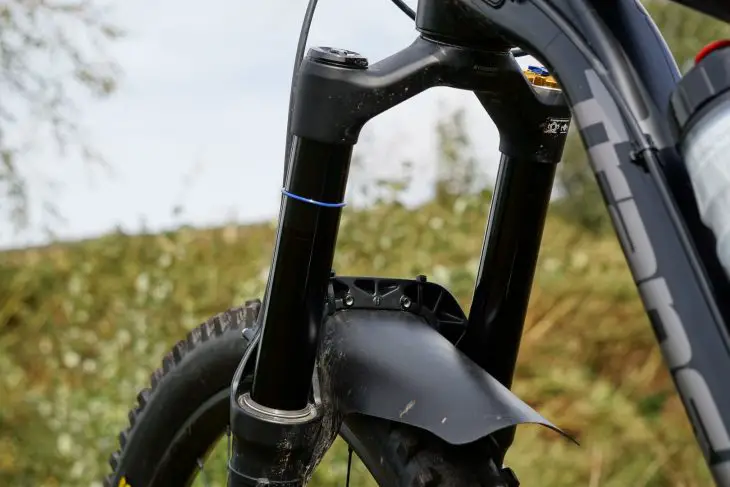
The crown steerer is a one piece aluminium affair, and on the back of the arch are screw holes to mount a mud guard that X-Fusion is looking to develop in the near future. The Trace 36 benefits from X-Fusion’s new Nvolve seals which X-Fusion claims are ‘ultra durable, low friction wiper seals’ which ‘reduce seal drag and increase durability’ and everything is bolted together at the business end with X-Fusion’s new LockX 15mm locking axle, which although not quick release, is lightweight and simply needs a 5mm hex to get in and out.
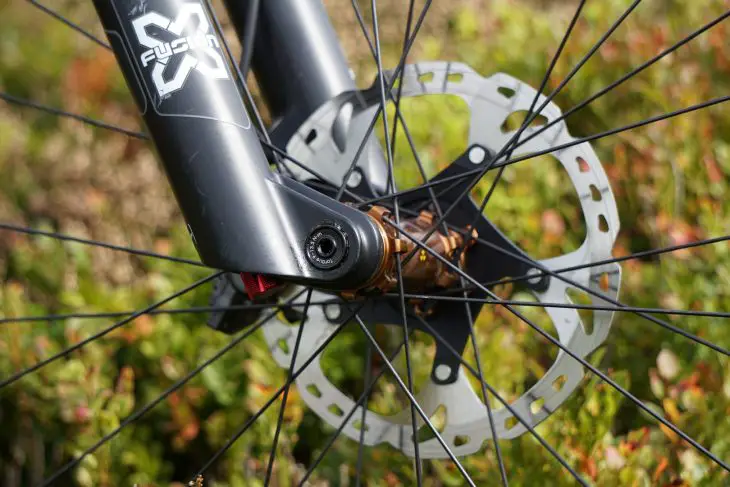
Set up.
Setting up the Trace is a reasonably simple process of adding air and twisting dials, and as with many air forks these days the Trace 36 has a handy air pressure guide a stuck onto the lower leg. The fork also comes with two volume spacers pre-installed which have stayed put throughout the duration of the test. X-Fusion has now adopted the same sort of system as a lot the other brands for accessing the air spring, so all you need is a cassette tool, then add or remove tokens as required.
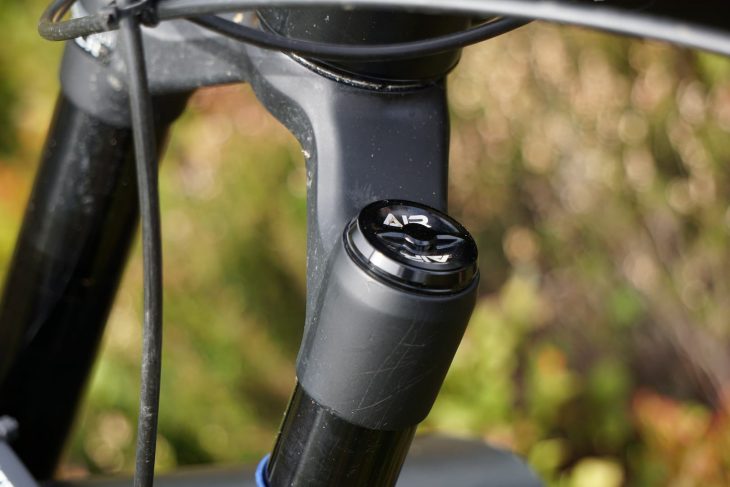
Having checked the guide I inflated the fork to 90psi and went about setting rebound etc (for reference I weigh around 91kg). With the recommended air pressure though, I didn’t seem to be getting anywhere near enough sag, but as it was what X-Fusion recommend, I decided to stick with it and see if things would loosen up and bed in over the course of a ride.
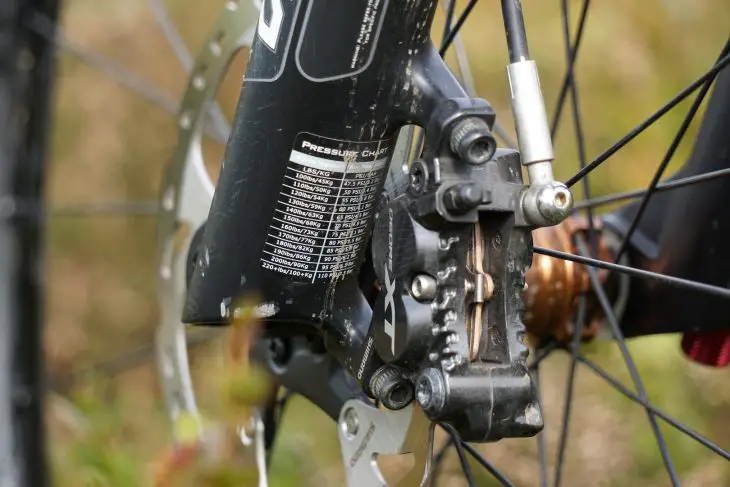
With 15 clicks of high speed damping available, and 15 clicks of low speed, I decided to back off the low speed to get maximum small bump sensitivity, and set the high speed somewhere in the middle allowing me plenty of adjustment either way. Rebound is set using the dial on the bottom of the damper leg and has a massive 34 clicks of adjustment. Giving the fork the old workshop bounce test I set rebound a couple of clicks past the middle, which also gave me plenty of adjustment either way for on trail tuning.
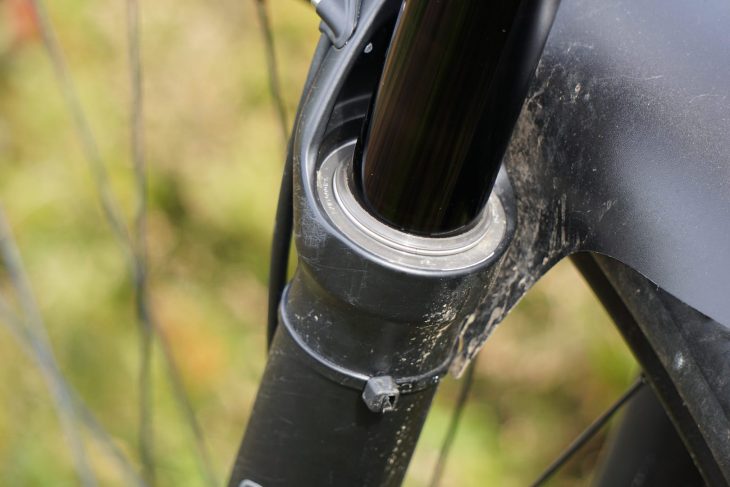
The first thing I noticed on the initial ride though was how wrong the air pressure guide was! The fork felt harsh and sat at the top of its travel making the front wandery on climbs and unruly on the descents. During a lap of a favourite local test loop that includes everything from rocky climbs, moorland singletrack and steep descents, the fork barely moved through half of its travel.

This was remedied easily enough by reducing the air pressure, and once I’d got it sagged to around 25% the fork started to feel good. To get that 25% sag though, I had to reduce the pressure to 70psi which was a massive 20psi lower than the recommended settings.
With the air pressure and sag set correctly though I could concentrate on the damper settings. With the reduced air pressure the suppleness of the fork was immediately apparent. It was really smooth off the top with hardly any breakaway force, and was really active when climbing. In fact, a little too active. I dialled on the low speed compression gradually click by click, as the fork seemed get even more supple once it had bedded in. I ended up with four clicks on which gave a good balance of small bump sensitivity and compliance, without being overly active on climbs or divey on slower speed tech tracks.
High speed damping felt pretty good from the start, but after a couple of rides I found myself not really using the last bit of travel on bigger hits. A couple of clicks back on the high speed though and things were much better. I’ve kept it with six clicks on since that initial set up period and the fork has felt great.
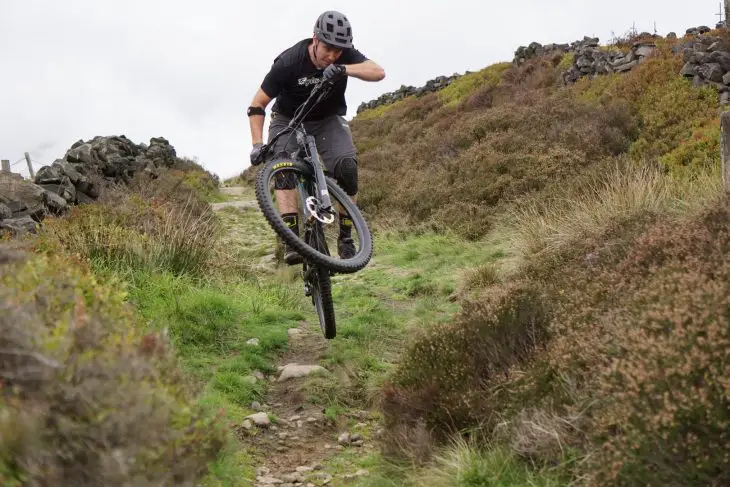
The final dial to twiddle was rebound. After the first couple of rides that took in some fast, rocky descents that have multiple lines and rocks that you can double up, the front felt slightly planted, and although it was doing a great job of soaking up the hits, felt a little lacking. I gradually increased the rebound and finished with 24 clicks on which still gave the fork a composed feel on the rough stuff, but combined with the high speed compression, also gave it the added pop that I was looking for.
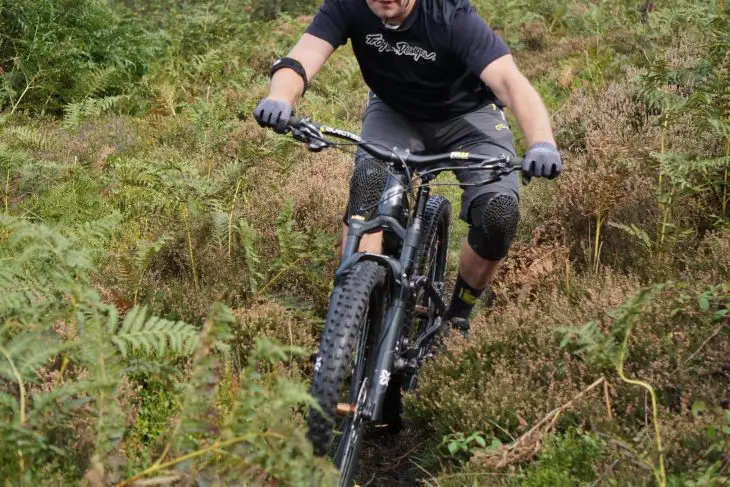
Riding.
I’ve been riding the Trace for a month and half now and have been really impressed. It’s been ridden on everything from long moorland XC rides, taking in fast, high speed pack horse trails, to steep valley tech, and everything in between.
As mentioned, it’s supple, really supple. It’s great when climbing and tracks really well over rocky and rooty ground once you’ve got your settings dialled, without being overly active. Along is also fine with no major quirks or issues when riding gradual, rolling terrain, the fork just does it’s job. That suppleness in the initial part of the travel helps to smooth things out on more rolling terrain where the Trace is really active and soaks up small bumps amazingly.
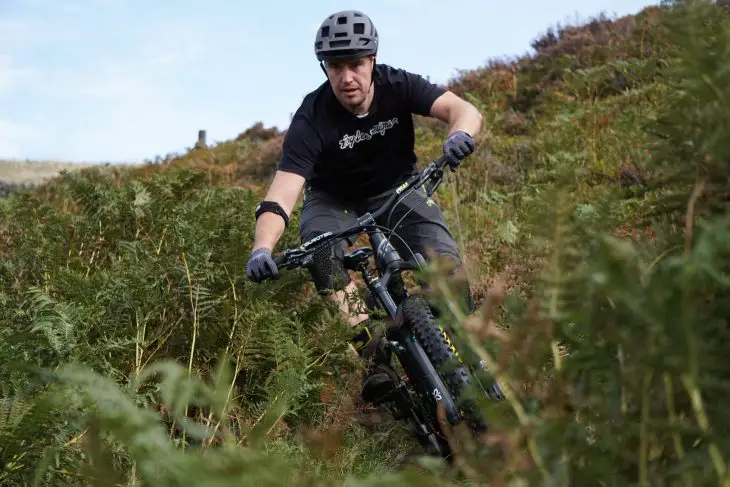
Descending on the Trace 36 is similarly unremarkable, but in the best way possible – it does exactly what you need it to do, when you need it and it’s coped brilliantly with everything that’s been thrown at it. On fast, rough trails the fork takes everything you can hit it with and the stiff chassis keeps you on track, letting you concentrate on picking lines. The damper does a great job of keeping you in the sweet spot, and feels nice and supportive in the middle of its travel. The Trace manages to stay nice and supple at the start, ramping up nicely at the end but never feeling harsh. And that mid stroke support and ride position lets you drop into steep lines and hit fast bermed corners with confidence knowing that the support is there, with plenty in reserve for when needed.
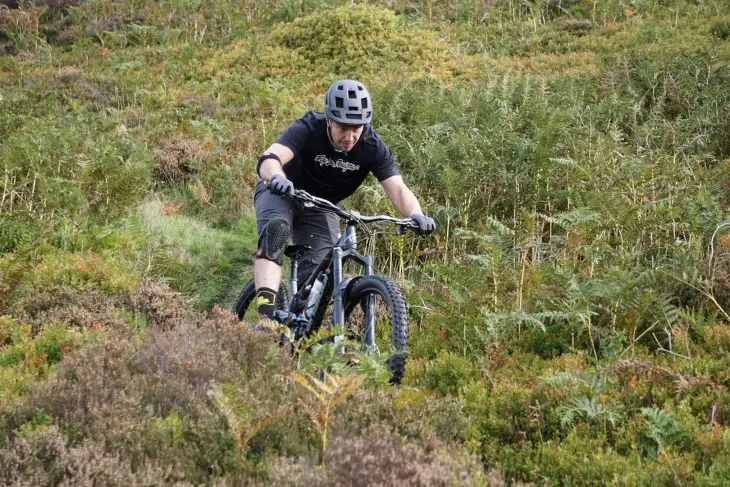
Overall.
I came into this test straight off the back of testing the Lyrik RC2, which is one of the best forks I’ve ridden, so the Trace 36 HLR had a lot to live up to. And after a couple of rides getting it set up exactly how I wanted it, that’s exactly what it has done. It’s stiff and composed on rough chunky trails, lets you get on with riding, and offers plenty of adjustment to get things just right. It’s taken everything I’ve thrown at it, from shady line choices to a spectacular nose case that completely trashed the front wheel, and hasn’t missed a beat. With the Trace 36 HLR, X-Fusion has managed to combine top end performance and a great price to make a serious alternative to the bigger brands in the hard hitting 29er market.
X-Fusion TRACE 36 HLR Specifications
- Weight: 4.4lbs. 2000g (claimed, 2,120g measured with uncut steerer).
- Wheel Size: 29in
- Travel: 170mm, (ITA 140/160/170)
- Stanchion: 36mm Aluminium
- Spring: Air
- Damper: Roughcut HLR
- Adjustments HLR: High and Low-Speed Compression, Rebound, Air Pressure
- Steerer: Taper only
- Axle: bolt-On Boost 110 x 15mm
- Colours: Flat Black
- Offset: 51mm
- Axle to Crown: 581mm @ 170mm
- Offset: 51mm
- Max Rotor Size: 180-203mm (XF Adaptor only)
- Price: £800.00
Review Info
| Brand: | X-Fusion |
| Product: | Trace 36 HLR |
| From: | upgradebikes.co.uk |
| Price: | £800 |
| Tested: | by Ross for 6 weeks |
Comments (2)
Leave Reply
Post Comment




Schoolboy error Ross. Everyone surely knows you have to run XF forks at least 10% below the recommended? They’ve been playing that trick on us since day 1.
Is that on a sentinel? I’m considering one and my first choice forks are not available in reduced offset.
How did this ride with the standard offset? I’ve heard differing opinions on wether it is essential or not.